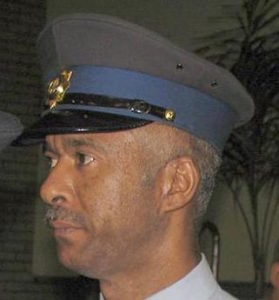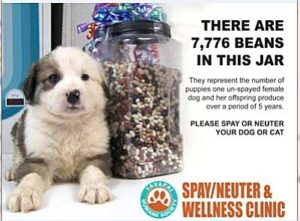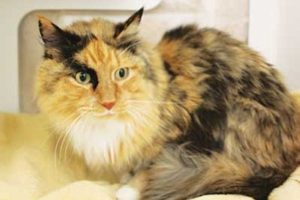 Our motto at the Yavapai Humane Society is “Every Animal Counts.” We work hard to live up to that because we know that lost, homeless, abused and neglected animals count on YHS to intervene and reverse their plight.
Our motto at the Yavapai Humane Society is “Every Animal Counts.” We work hard to live up to that because we know that lost, homeless, abused and neglected animals count on YHS to intervene and reverse their plight.
Unfortunately, we can’t save them all – at least not without broad community support. Too often, and for too many animals, our limited resources become exhausted and we are forced to make the difficult decision to take the life of an animal before their time.
The good news is that euthanasia at YHS is down drastically! Following a recent change in YHS leadership and policy, the killing was reduced 42.23 percent when compared to the same period last year. Remarkably, this was accomplished despite a 3 percent increase in the number of animals taken in during this same period.
Some believe that killing shelter animals is the unavoidable by-product of providing efficient municipal services to residents. But these pragmatists might consider a state of Minnesota Legislative report, which found that for each dollar invested in spay/neuter programs, $20 in animal control costs could be saved over 10 years.
People who excuse euthanasia in shelters often say we have to be “realistic,” but such realism is best directed at the sources of the problem. Effective spay/neuter programs to assist pet owners who are poor, elderly on a fixed income, or living in remote or underserved areas is a far better use of public and private funding than catching and killing lost and homeless pets.
YHS is engaged in a quest to achieve “no-kill.” No-kill is defined as consistently applying the same criteria a loving pet owner or compassionate veterinarian would use to determine if or when to euthanize a shelter animal. That is, no healthy or treatable animal would be killed simply because of a lack of shelter space or resources.
To help orchestrate a more strategic no-kill effort, YHS is announcing a community-wide spay/neuter initiative called “The Big Fix.” The Big Fix is a program that will provide low- or no-cost spay/neuter services for pets of needy families as well as pets adopted from YHS shelters.
The Big Fix will be funded by donations and grants – and it desperately needs your help to get started. While the reduced killing over the past two months represents a good start in the right direction, we have a long way to go. Your check or online donation to YHS, with an annotation for “The Big Fix,” will help fix the problem of pet overpopulation so we can more quickly achieve No-Kill!
So where is YHS in achieving this goal today? The industry standard for calculating a community’s progress toward no-kill is determined by the number of pet deaths in local shelters annually per 1,000 human residents. The national kill rate in 2009 was 13.5. This is based on an estimated human population of 300,079,939 and 4,157,918 recorded animal deaths.
In the Southwest (Arizona, Colorado, Nevada, New Mexico and Utah), the kill rate was 15.2, based on an estimated human population of 19,048,000 and 289,530 recorded animal deaths.
Our quad-city region has an estimated human population of 110,000. With 1,892 shelter deaths in 2009, our kill rate was a staggering and unacceptable 17.25.
For years, the animal welfare community thought no-kill would be achieved when killing was reduced to 5 deaths per 1,000 residents, recognizing there will always be terminally ill and injured animals and dangerously aggressive dogs that require humane euthanasia.
However, in recent years, New York City and Los Angeles reduced their kill rates to 2 and 3.7, respectively, demonstrating we really don’t know how far we can go in this life-saving quest. And if you think things work differently in small towns or rural communities, consider the fact that Reno, Nevada, has reduced their kill rate to 5.4.
As a community, we can choose to pay the relatively modest cost to fund targeted spay/neuter programs designed to fix the problem on the front end, or we can continue to pay the ever-increasing costs of catching and killing animals on the back end. We prefer the more proactive front-end approach, and we hope you will agree by sending in a donation today for “The Big Fix,” so we can help low-income pet owners spay and neuter their pets. For more information contact me.







